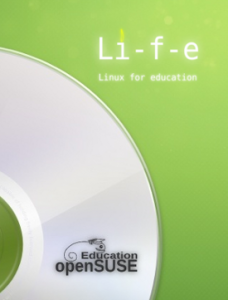You are invited to this mega IT exhibition, see you there if you are in or around Baroda during the next three days.
Thanks to the fantastic work by openSUSE Arm team, you can get full desktop on your armv7l powered phone or tablet(any recent dual core devices should work), without the need for repartition, formats, bootloader hacks or sacrificing your nicely running latest android on it. What you need is rooted device with busybox, Android VNC and terminal app installed and 4GB free space on sdcard(internal or external).
(more…)

As any hackaton, you finish a bit exhausted. but what the hell, how rich was this week!
I will not come back on the long (could we say impressive) list of things done.
Wiki Marketing
or Artwork todo.
A enormous thanks to all participants :
Carlos (victorck), Carlos (CarlosRibeiro), Izabel (IzabelleValverde), Kostas (warldofff), Ilias (zoumpis), Marcel (tux93), Richard (ilmehtar), Michal (|miska|).
Also they deserve a full bunch of applause, thanks to SUSE’s people!
Augustin, Jos, Will, Christopher, Adrian, Henne, Jurgen, Kenneth, Cassio, Alberto, Ralf, Roland, James, Jan, Ludwig, Cornelius, Suzanne and at least a big dozen of others…
For your clear engagement, your support to empower our community, your advises, your welcomes, and being so kind with the turbulent community’s Geekos we were…
Here is a new tool that provides a simple zenity based GUI frontend to live-fat-stick script. The live-fat-stick script allows you to create multi boot USB stick/HDD which has vfat partition on it without formatting or removing existing data on it, it uses whole ISO images to boot so the image is still usable to create more live USB sticks or burn CD/DVDs. In live mode the device’s vfat partition can be mounted to access/modify and save files.
Currently live CD/DVD isos of openSUSE 12.2(and derivatives) including all from susestudio, Mint, Ubuntu(and derivatives) and Fedora are supported. Fedora iso is not copied but is extracted on the USB device instead as it does not support booting from iso image yet.
Here is Live USB GUI in action:
(more…)
I’m testing PulseAudio 3.0 on openSUSE 12.3 RC1 and it might be helpful to hang this information out here where Google can find it:
To use Skype with openSUSE 12.3, you need to download the Skype package for openSUSE. If you’re using a 64 bit machine/install, like most of us nowadays, you also need some 32 bit compatibility packages, included with openSUSE.
zypper in skype-4.1.0.20-suse.i586.rpm alsa-plugins-pulse-32bit
to install the package, its 32 bit requirements, and the 32 bit ALSA plugin for PulseAudio it also needs, but doesn’t/can’t specify automatically.
Happy calling.
 Li-f-e just got better. This update follows the release of openSUSE Edu Li-f-e 12.2 way back in September 2012, is made up of same packages but includes the updates available from official openSUSE and all the additional repositories such as Build Service Education, Packman etc.
Li-f-e just got better. This update follows the release of openSUSE Edu Li-f-e 12.2 way back in September 2012, is made up of same packages but includes the updates available from official openSUSE and all the additional repositories such as Build Service Education, Packman etc.
Get it from here:Direct Download | Torrents | Metalinks | md5sum
Have a lot of fun…
Your openSUSE Education Team